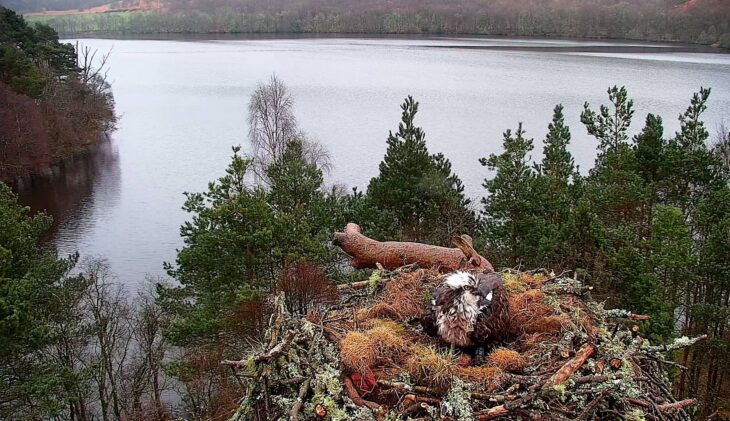NC0 lays her first egg of 2022!
NC0 laid her first egg of the season at Loch of the Lowes Wildlife Reserve at 18:34 this evening. Her first egg comes 20 days after arriving on the reserve and 19 since she first successfully mated with LM12.

We’re expecting to see more eggs in the days to come. Eggs are usually laid 1-3 days apart, although the gap between laying can be up to six days. In their first year of laying, female ospreys may only produce one or two eggs. But over time they will build up to an average of three eggs in total.
Osprey eggs range in colour, from off-white to pinkish or buff, and they are highlighted with mottled dark brown or reddish splotches. These splotches vary in size and distribution, with some eggs being mottled all over and others having more colouration at one end.
These variations mean we can often distinguish between each egg, helping us to monitor which egg hatches first. The colours have an important purpose: while we may be able to see the eggs clearly on webcam, from above their colouration makes them incredibly well camouflaged and harder for predators to spot.
Eggs have to be incubated around the clock for around 5-6 weeks to successfully hatch. The female does around 80% of egg incubation but when the male brings a fish, she will leave the nest and LM12 will take over. LM12 will then remain on the nest until NC0 returns.
Keep your eye out for a glimpse of NC0’s eggs by watching our live webcam.
Bethany
Species Protection Officer
The Trust’s Osprey Protection Programme at Loch of the Lowes is supported by players of People’s Postcode Lottery.
Help protect Scotland’s wildlife
Our work to save Scotland’s wildlife is made possible thanks to the generosity of our members and supporters.
Join today from just £3 a month to help protect the species you love.
Preface
NC0 laid her first egg of the season at Loch of the Lowes Wildlife Reserve at 18:34 this evening. Her first egg comes 20 days after arriving on the reserve …
